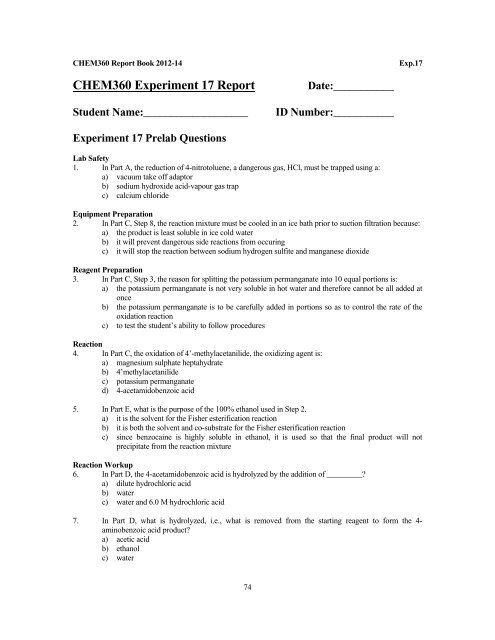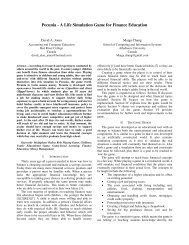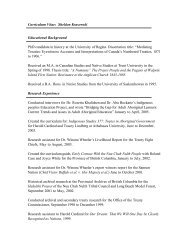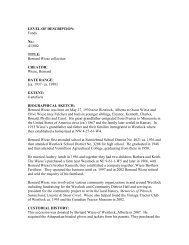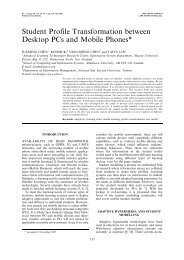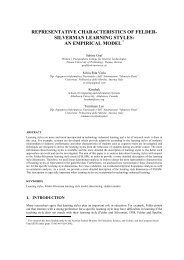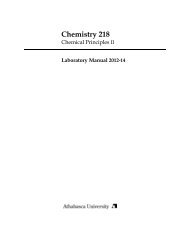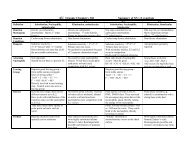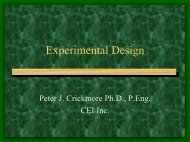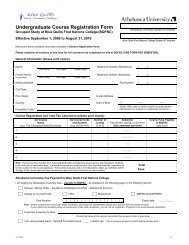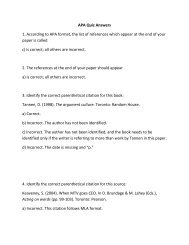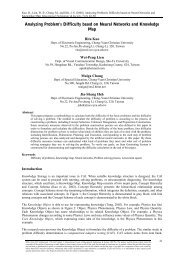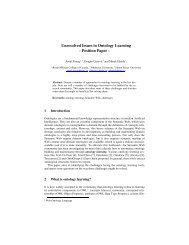You also want an ePaper? Increase the reach of your titles
YUMPU automatically turns print PDFs into web optimized ePapers that Google loves.
CHEM<strong>360</strong> Report Book 2012-14Exp.17CHEM<strong>360</strong> Experiment 17 ReportStudent Name:___________________Date:___________ID Number:___________Experiment 17 Prelab QuestionsLab Safety1. In Part A, the reduction of 4-nitrotoluene, a dangerous gas, HCl, must be trapped using a:a) vacuum take off adaptorb) sodium hydroxide acid-vapour gas trapc) calcium chlorideEquipment Preparation2. In Part C, Step 8, the reaction mixture must be cooled in an ice bath prior to suction filtration because:a) the product is least soluble in ice cold waterb) it will prevent dangerous side reactions from occuringc) it will stop the reaction between sodium hydrogen sulfite and manganese dioxideReagent Preparation3. In Part C, Step 3, the reason for splitting the potassium permanganate into 10 equal portions is:a) the potassium permanganate is not very soluble in hot water and therefore cannot be all added atonceb) the potassium permanganate is to be carefully added in portions so as to control the rate of theoxidation reactionc) to test the student’s ability to follow proceduresReaction4. In Part C, the oxidation of 4’-methylacetanilide, the oxidizing agent is:a) magnesium sulphate heptahydrateb) 4’methylacetanilidec) potassium permanganated) 4-acetamidobenzoic acid5. In Part E, what is the purpose of the 100% ethanol used in Step 2.a) it is the solvent for the Fisher esterification reactionb) it is both the solvent and co-substrate for the Fisher esterification reactionc) since benzocaine is highly soluble in ethanol, it is used so that the final product will notprecipitate from the reaction mixtureReaction Workup6. In Part D, the 4-acetamidobenzoic acid is hydrolyzed by the addition of _________?a) dilute hydrochloric acidb) waterc) water and 6.0 M hydrochloric acid7. In Part D, what is hydrolyzed, i.e., what is removed from the starting reagent to form the 4-aminobenzoic acid product?a) acetic acidb) ethanolc) water74


